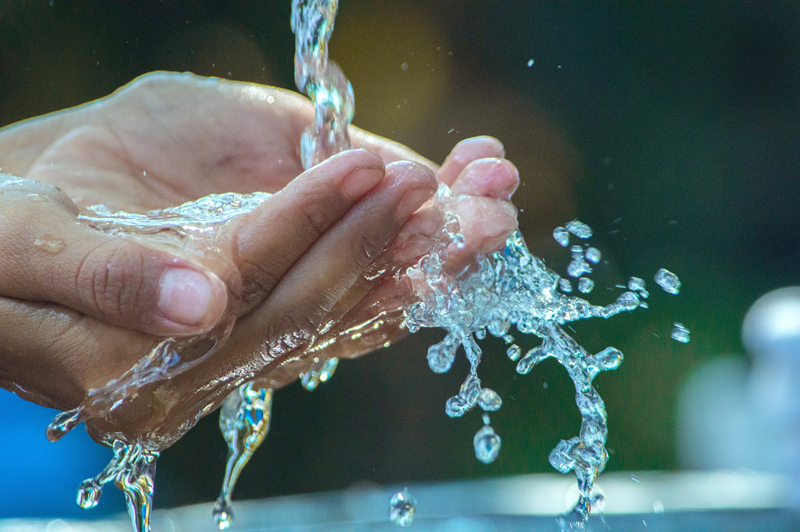 Water Sanitation
Water Sanitation
Improving access to water, sanitation and hygiene can save 1.4 million lives per year, says new WHO report
Geneva: Half of the world’s population still does not have adequate access to safe drinking water, sanitation and hygiene (WASH) which could have prevented at least 1.4 million deaths and 74 million disability-adjusted life years in 2019, according to the latest report by the World Health Organization (WHO) and an accompanying article published in The Lancet.
“With growing WASH-related health risks seen already today through conflicts, the emergence of antimicrobial resistance, the re-emergence of cholera hotspots, and the long-term threats from climate change, the imperative to invest is stronger than ever” said Dr Maria Neira, Director, WHO Department of Environment, Climate Change and Health. “We have seen improvements in WASH service levels over the last 10 years, but progress is uneven and insufficient”
Burden of disease attributable to unsafe drinking water, sanitation, and hygiene: 2019 update presents estimates of the burden of disease attributable to unsafe drinking water, sanitation and hygiene for 183 WHO Member States disaggregated by region, age and sex for the year 2019. The estimates are based on four health outcomes - diarrhoea, acute respiratory infections, undernutrition, and soil-transmitted helminthiases.
Diarrhoeal disease accounted for most of the attributable burden, with over one million deaths and 55 million DALYs. The second largest contributor was acute respiratory infections from inadequate hand hygiene, which was linked to 356 000 deaths and 17 million DALYs.
Among children under five, unsafe WASH was responsible for 395 000 deaths and 37 million DALYs, representing 7.6% of all deaths and 7.5% of all DALYs in this age group. This included 273 000 deaths from diarrhoea and 112 000 deaths from acute respiratory infections. These diseases are the top two infectious causes of death for children under five globally.
Important disparities were noted between regions and income groups. More than three-quarters of all WASH-attributable deaths occurred in the WHO African and South-East Asia regions, while 89% of attributable deaths were from low- and lower-middle income countries. However, even high-income countries are at risk, as 18% of their diarrhoeal disease burden could be prevented through improved hand hygiene practices.
While these estimates included four health outcomes for which data were available to quantify the impact, the true burden is likely to be much higher. The impacts of unsafe WASH on health are wide-ranging and go beyond disease by affecting social and mental well-being. In addition, climate change is likely to exacerbate many WASH-related diseases and risks which are not fully captured in the present estimates.
To reduce the WASH-attributable burden of disease, WHO urges governments to take the following actions with support from UN agencies, multilateral partners, the private sector and civil society organizations:
Radically accelerate action to make safe WASH a reality for all.
The mid-term comprehensive review of the International Decade for Action Towards the Sustainable Development Goals saw renewed commitments from governments to accelerate progress towards the goal of universal access to safe WASH. By quantifying for the first time the health gains associated with higher WASH service levels, the updated estimates provide strong evidence to support efforts to take these commitments to action.
Focus efforts on the poorest and most disadvantaged. The burden of disease is largely driven by inadequate access in low- and middle- income countries, and national estimates on WASH access often hide disparities within countries. Access to WASH services is typically lower among rural populations and lower socio-economic groups. Even in high-income countries, where access to safely managed drinking-water and sanitation services is generally high, certain marginalized communities are underserved and face higher risks.
Adapt national monitoring systems to improve data on population exposure to safely managed services. Data on higher levels of WASH services remain sparse in many countries. Governments should adapt national and local monitoring systems taking into consideration the higher service levels called for in the SDG framework, enabling a more accurate reflection of the full burden of disease associated with unsafe WASH.
“It is clear that inadequate access to safe water, sanitation, and hygiene services continues to pose a significant, and preventable, health risk, particularly to the most vulnerable populations,” said Mr. Bruce Gordon, Head, WHO Water, Sanitation, Hygiene and Health Unit. “The health benefits, as quantified in the report, are immense. Prioritizing those most in need is not just a moral imperative; it is key to addressing the disproportionate disease burden in low and middle-income countries and among marginalized groups in high-income countries.”
To support governments, WHO also today released a new tool to model disease impacts from different WASH scenarios. The tool will foster informed policy-making, guide targeted interventions, and support strategic resource allocation for WASH programming.
Support Our Journalism
We cannot do without you.. your contribution supports unbiased journalism
IBNS is not driven by any ism- not wokeism, not racism, not skewed secularism, not hyper right-wing or left liberal ideals, nor by any hardline religious beliefs or hyper nationalism. We want to serve you good old objective news, as they are. We do not judge or preach. We let people decide for themselves. We only try to present factual and well-sourced news.






